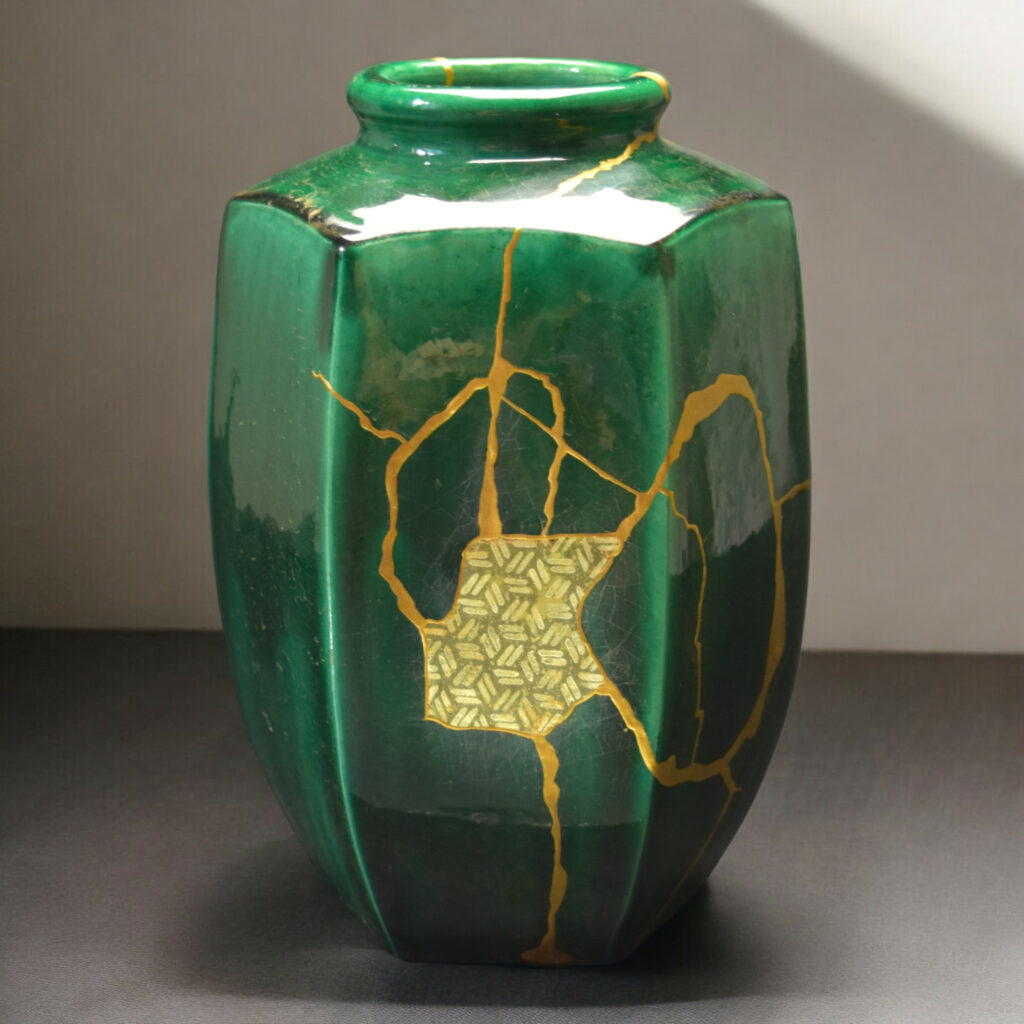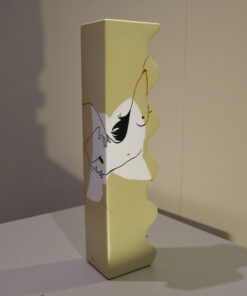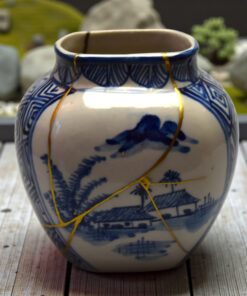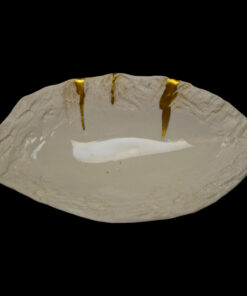The world of art restoration is one where aesthetics meets technique. Recently, I had the privilege of working on a particularly rewarding project: the restoration of a vase using the ancestral Japanese techniques of kintsugi and maki-e. For this unique piece, I chose to incorporate a motif emblematic of Japanese culture: the kagome.

Kagome: a multi-faceted motif
The kagome motif, made up of interlacing triangles, is omnipresent in Japanese art and architecture. It symbolizes solidity, flexibility and interconnection. Often used to make baskets or fences, it also evokes the idea of protection and harmony. By incorporating it into my restoration, I wanted not only to repair the object, but also to breathe new life into it, rich in symbolism.
Kintsugi and Maki-e: a perfect marriage
Kintsugi, the art of repairing broken ceramics with gold, is a technique that celebrates imperfection. Maki-e, on the other hand, is a decorative lacquer technique that creates patterns by inlaying metallic powders. By combining these two techniques, I was able to create a restoration that was both functional and aesthetically remarkable.
The kagome motif lent itself perfectly to this dual approach. I began by repairing the cracks in the vase using the kintsugi technique, then delicately applied the kagome pattern using the maki-e technique. The gold powder used for the kintsugi creates a striking contrast with the deep black of the lacquer and the fine lines of the kagome motif.
A unique restoration steeped in history
This restoration is much more than a simple repair. It’s a celebration of the object’s history, Japanese culture and craftsmanship. The once broken vase is now a unique work of art, with every crack and gold line telling a story.
In choosing the kagome motif, I wanted to create a piece that evokes both tradition and modernity. This motif, charged with symbolism, adds an extra dimension to this restoration and makes it a work of art in its own right.
-
 “Hot Voltige” Vase: Rebirth in Gold and Ink
“Hot Voltige” Vase: Rebirth in Gold and Ink -
 White vase with kintsugi and yobitsugi1 750 € VAT excl.
White vase with kintsugi and yobitsugi1 750 € VAT excl. -
 White and blue vase with chinese landscape1 150 € VAT excl.
White and blue vase with chinese landscape1 150 € VAT excl. -
 Porcelain canapé plate250 € VAT excl.
Porcelain canapé plate250 € VAT excl.




